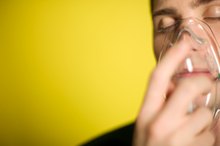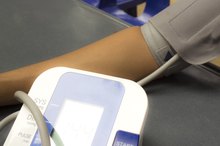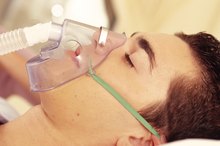How to Pass a Hearing Test
Hearing tests are required by some employers and industries to maintain licenses and perform certain job duties. Industrial hearing tests are pass or fail, but the specific industry you’re testing may determine how much hearing loss is allowable. Hearing tests done for medical purposes use the same testing pass or fail protocol; however, they’re used to determine if someone has normal hearing or a certain degree of hearing loss. Even though it’s impossible to cheat on a hearing test in order to pass, following these steps will prepare you for taking a hearing test and ensure accurate test results.
If you are experiencing serious medical symptoms, seek emergency treatment immediately.
Don't do anything that will disturb your ears alone prior to having a hearing test, including using cotton swabs or any other item to clean out your ears before your hearing test. Probing in your ears can push earwax deeper and cause bleeding or irritation. During the exam, the clinician will check your ears, and if your ears need cleaning she will tell you.
How to Troubleshoot a Blood Pressure Monitor
Learn More
Take out any earrings and take off glasses before the clinician hooks you up to the testing equipment. Even if the clinician says it’s not necessary, insist that you’ll be more comfortable with those items off.
Clear your mind and use the bathroom before the hearing test begins. If you're distracted, you’re more likely to miss very faint test tones. Don’t feel rushed or in a hurry; if you’re pressed for time, reschedule your test. Once you’re in the test area, take deep breaths while the clinician sets up his equipment.
How to Hear Your Own Heartbeat Without a Stethoscope
Learn More
Ask the clinician to repeat any testing instructions you’re unsure about. If the clinician starts the test without giving you any instructions, stop her. Since you want to be sure you understand exactly what's happening and what you need to do, ask for an explanation.
Stop the clinician if the ear pieces, headphones, or environment are intolerable. Ear inserts used for hearing tests will be noticeable, but shouldn’t hurt your ears. Headphones shouldn’t be so tight that they’re pinching your head. Don’t proceed with the test if the equipment placement isn’t comfortable from the start.
Respond even if you’re unsure whether you heard a sound or not. The purpose of a hearing test is to find the softest volume level you can hear tones at. The clinician will start each tone at a loud volume and take it down to a very faint volume to determine at what level you no longer can hear and at what level you begin to hear. So whether the tone sounds clear, faint, or far-off, respond.
Tips
If you have ringing in your ears, tell the clinician prior to starting the hearing test. During the test, if the tones sound too similar to your ear ringing, stop the clinician and tell him. He can change the presentation tone to a sound that’s easier to distinguish.
Hearing test equipment must be calibrated and kept in good working order. Getting a second hearing test from another clinician will confirm the accuracy of your first test.
Warnings
Hearing tests should be administered in a soundproof environment using ear inserts or headphones. Your doctor standing three feet behind you and whispering isn’t a hearing test.
Related Articles
References
- Kochkin, S., & Rogin, C. M. A. (2000). Quantifying the obvious: The impact of hearing instruments on quality of life [PDF, 5.5MB]. Hearing Review, 7(1), 8–34.
- Lin, F. R., Metter, E. J., O’Brien, R. J., Resnick, S. M., Zonderman, A. B., & Ferrucci, L. (2011). Hearing loss and incident dementia. Archives of Neurology, 68, 214–220.
- Quick Statistics (April 2015). National Institute on Deafness and Other Communication Disorders (NIDCD).
Tips
- If you have ringing in your ears, tell the clinician prior to starting the hearing test. During the test, if the tones sound too similar to your ear ringing, stop the clinician and tell him. He can change the presentation tone to a sound that’s easier to distinguish.
- Hearing test equipment must be calibrated and kept in good working order. Getting a second hearing test from another clinician will confirm the accuracy of your first test.
Warnings
- Hearing tests should be administered in a soundproof environment using ear inserts or headphones. Your doctor standing three feet behind you and whispering isn’t a hearing test.
Writer Bio
In the hot desert of Arizona, Nadia Benavidez has been studying hearing instrument science since 2002. After leaving a clinical practice, Benavidez has put her talent to work writing informative articles related to health and wellness. Currently Benavidez is working on her first book.







